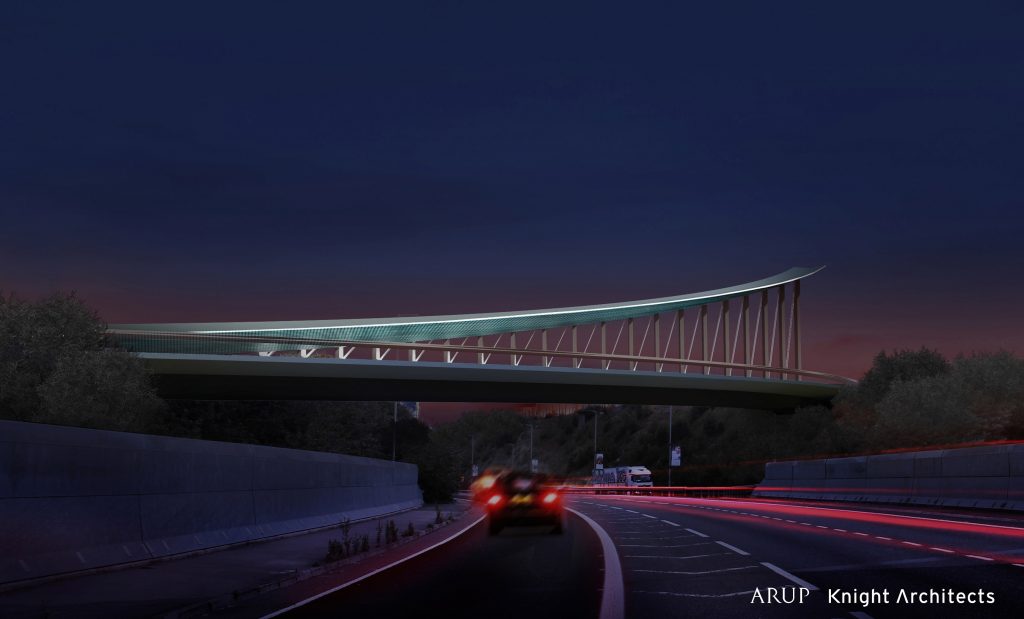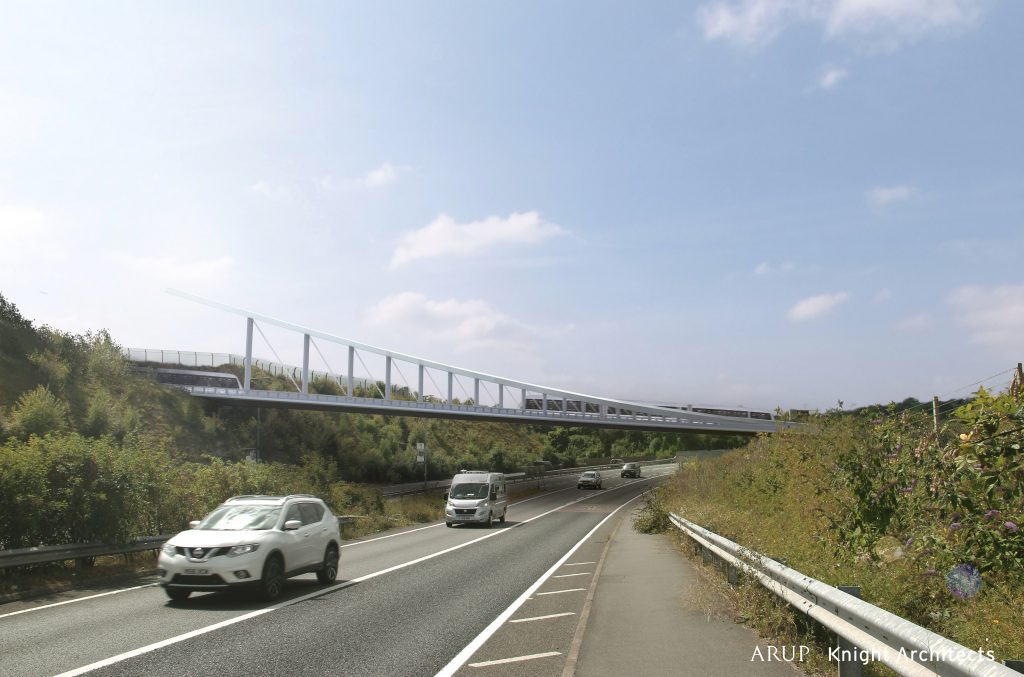Meet the Luton Dart
Every project John Rowan and Partners works on throws up its own unique challenges – none more so than the £225m Luton DART scheme, due for completion next year. We spoke to Stephen Bull, Clerk of Works from John Rowan and Partners about the innovative transport project…

Image courtesy of Knight Architects and Arup
Luton Airport has great ambitions for growth.
It already caters for more than 15 million passengers a year, flying to 150 routes around the world, with its eye on expansion despite the impact of Covid. It’s a major contributor to the UK’s economy, employing more than 10,000 direct workers and indirectly supporting another 18,000.
To support its growth goals, the borough council’s airport company London Luton Airport Ltd (LLAL) is investing in a major project which includes a complete redesign of the terminal building, doubling the amount of retail space and the areas set aside for security search, immigration and baggage reclaim, a 1,700-space short-stay multi-storey car park and the Luton DART, an innovative cable car style autonomous light rail system.
The complex project forms part of Luton Borough Council’s £1.5 billion Luton Investment Framework which aims to transform Luton and secure long-term economic growth benefiting local business while ensuring the local community have access to high quality employment opportunities.
Meet the DART project
DART – the Direct Air to Rail Transfer system – will run for 2.1km, taking passengers to and from the airport’s new Parkway station direct to the terminal in under four minutes. With two four-train cars, each able to accommodate 170 passengers, the DART will transport up to 2,720 people an hour, with the service running every four minutes at peak times. And it’s this element where John Rowan and Partners skills and experience are being brought to bear.
The £225m DART scheme draws on a host of engineering solutions and, says Stephen Bull, John Rowan and Partners’ Clerk of Works for the project, he’ll probably never see anything quite like this again.
“The engineering on this job has been amazing,” he says. “There are seven different types of structure involved, each necessitating a different approach, and no two days are the same. To see it all coming together is something special.”
Stephen’s role as Clerk of Works is to oversee all aspects of health and safety on everything related to the DART project, as well as overseeing performance, something he has been doing since the very start of the scheme back in 2018.
“I spend a lot of time taking photographs and documenting the progress, so I’ve been able to observe all the different aspects of the development. A unique perspective, I suppose, and I doubt whether I’ll ever work on anything quite like this again!”
One of the highlights so far for Stephen has been seeing the installation of the 1,000 tonne DART Gateway bridge, which spans the A1081 dual carriageway – normally a busy thoroughfare for airport and local traffic.
“The team had a 48-hour window during which the 72 metre, 1,000 steel truss bridge had to be manoeuvred into position,” he recalls. “The road was closed for the duration but everything had to be finished so it could be reopened for traffic at 4am on the Monday morning.”

Image courtesy of Knight Architects and Arup
Great planning and spot-on delivery meant that the bridge was successfully installed ahead of the deadline – with a comfortable eight hours to spare.
“I was on night duty at the time and of course it was the coldest night of the year with the temperatures plummeting to minus 5 degrees. But it was just amazing to see the job done with such expertise and finesse.”
As well as the Gateway bridge, the DART railway scheme comprises two stations (Parkway and Central Terminal), a 350m viaduct, running slab, a tunnel and approaches, and a maintenance area. There’s a 600m cut-and-fill section, a 500m concrete base trough, and the 350m tunnel is cut-and-cover, dipping beneath the airport’s taxiway and finishing in the new Central Terminal, 20m below the current vehicle drop-off area.
The original design for the scheme, which will mean passengers will be able to travel between the airport and St Pancras in just 30 minutes, was created by Arup, with VolkerFitpatrick and Kier (VFK) and Doppelmayr Cable Car acting as project partners.
Doppelmayr Cable Car is supplying the cable-driven autonomous transportation system, which was selected for its low environmental impact.
The Luton DART project has a large social value ambition to support the economic development of the local area and has committed to the creation of a construction skills training hub, providing construction skills training, apprenticeships opportunities and work experience for local people.
It will also lead to the creation of 78 permanent new jobs, again for Luton residents.
Due for completion in 2022, the DART project is progressing well, much to the delight of the funding authority. Says Councillor Andy Malcolm, chair of LLAL and the council’s portfolio holder for finance: “This is without doubt the biggest and most complex construction project that either the council or LLAL have undertaken to date, and a key part of our long-term goal for 45% of passengers to access the airport by public transport.
“For the project to be so far advanced in the midst of a pandemic is an incredible effort by everyone involved and testament to the importance of this project not just for our airport but also for our town.”
